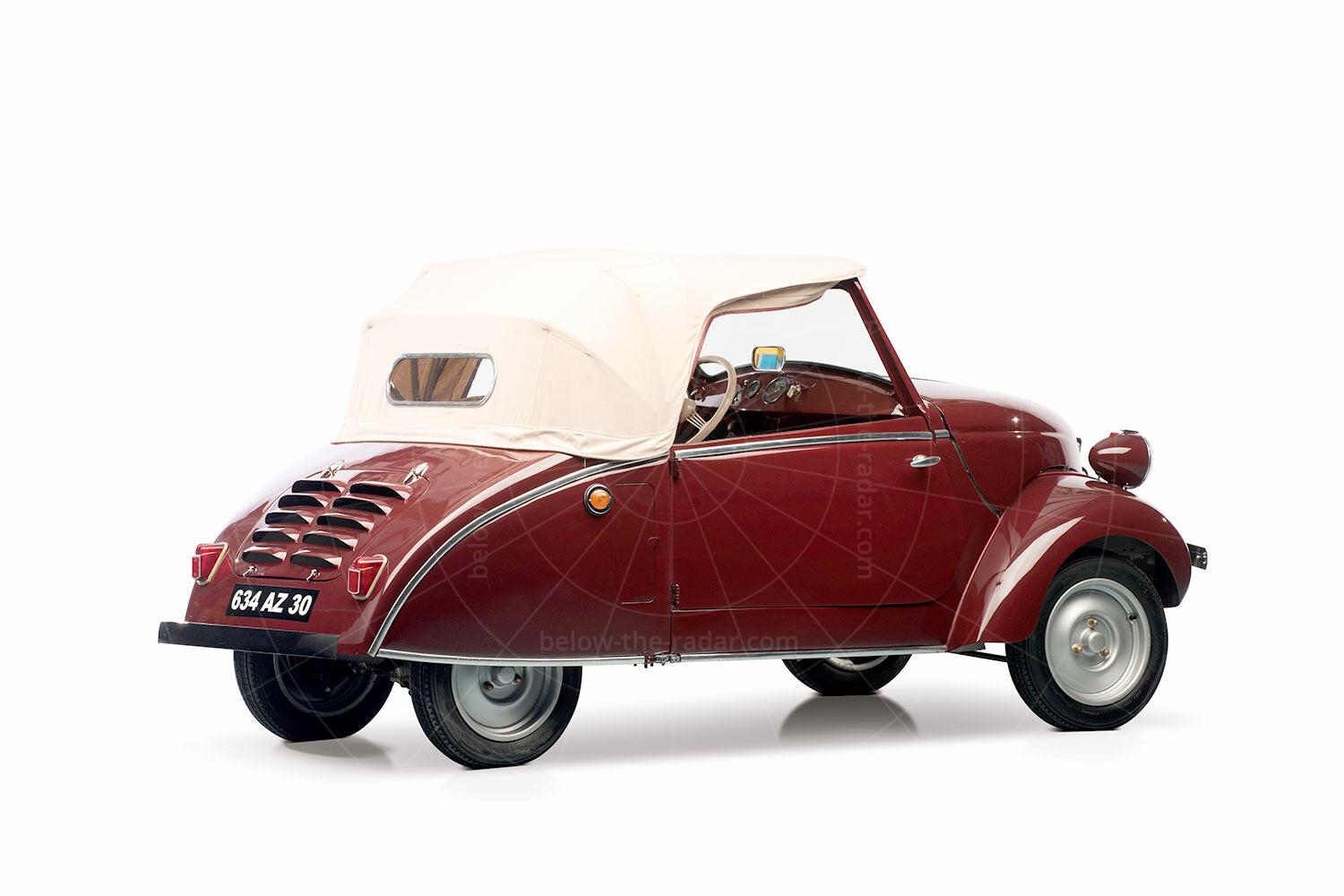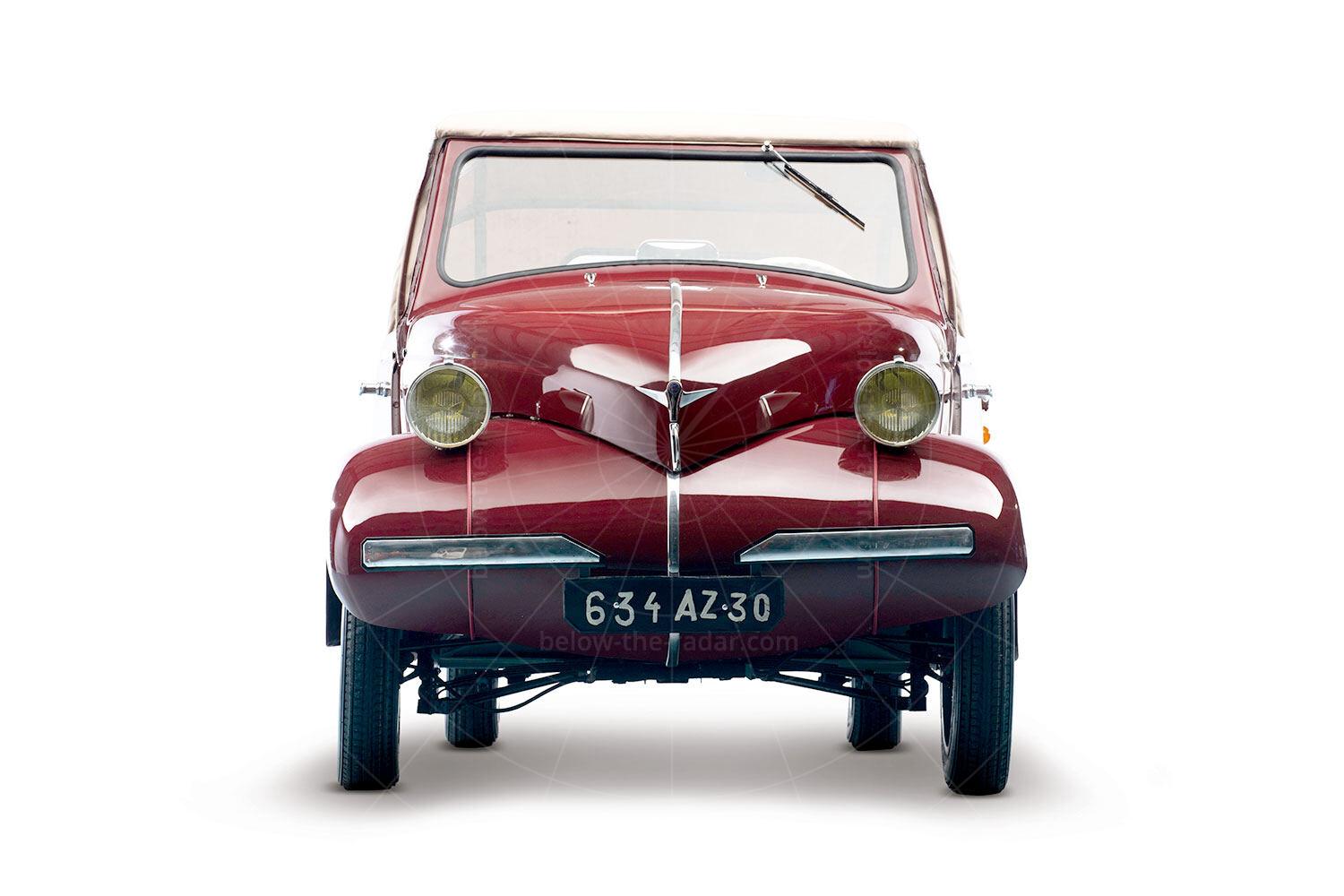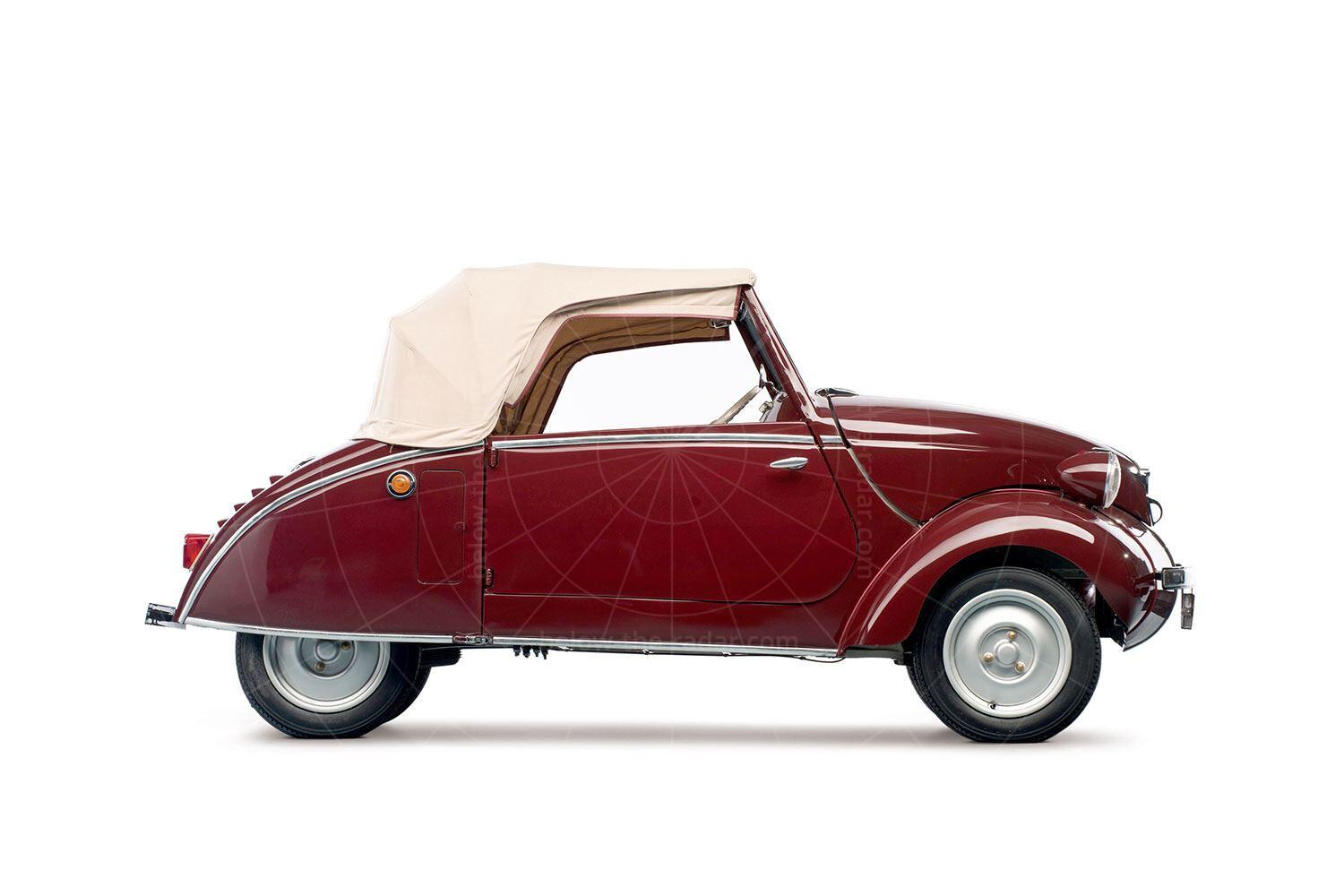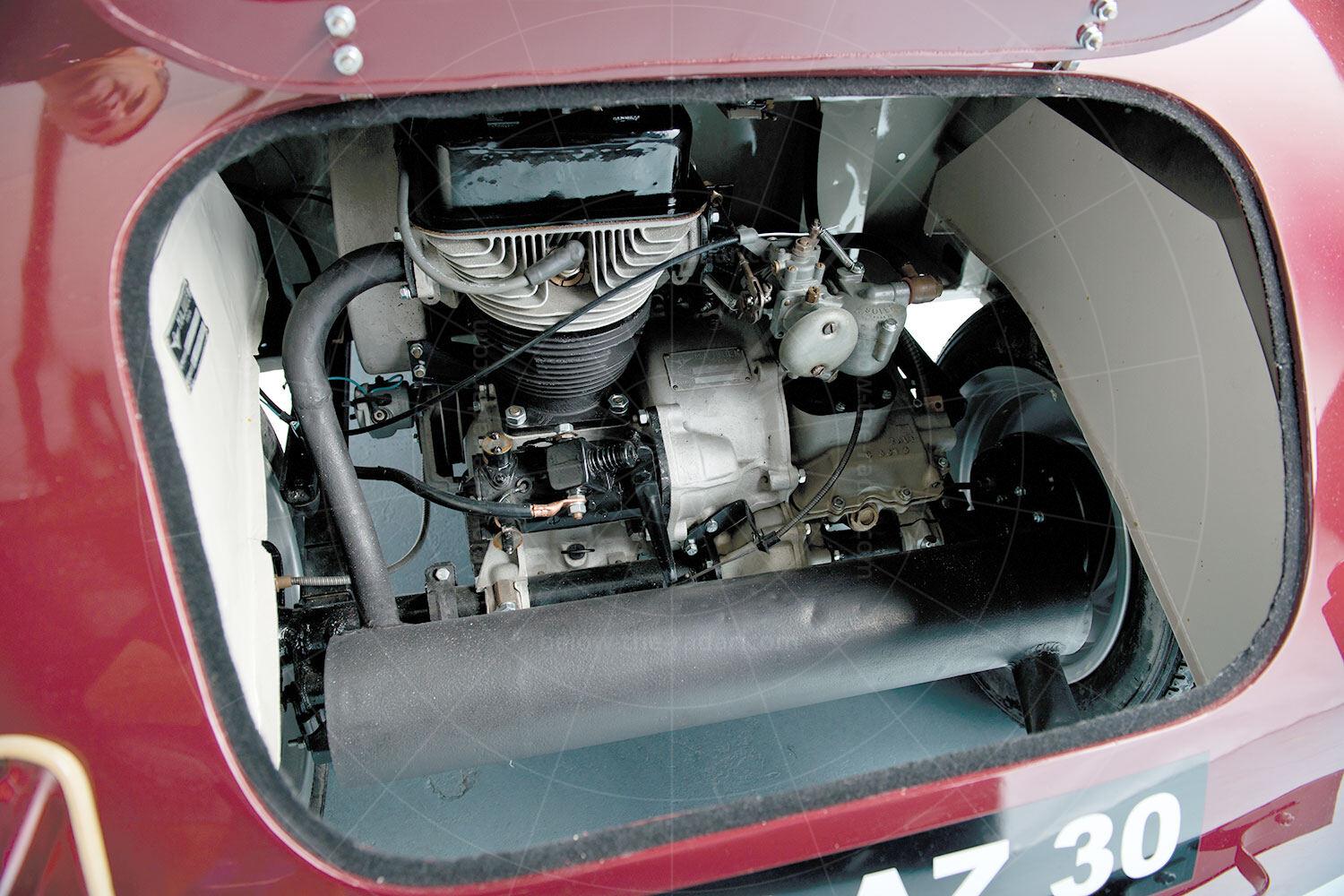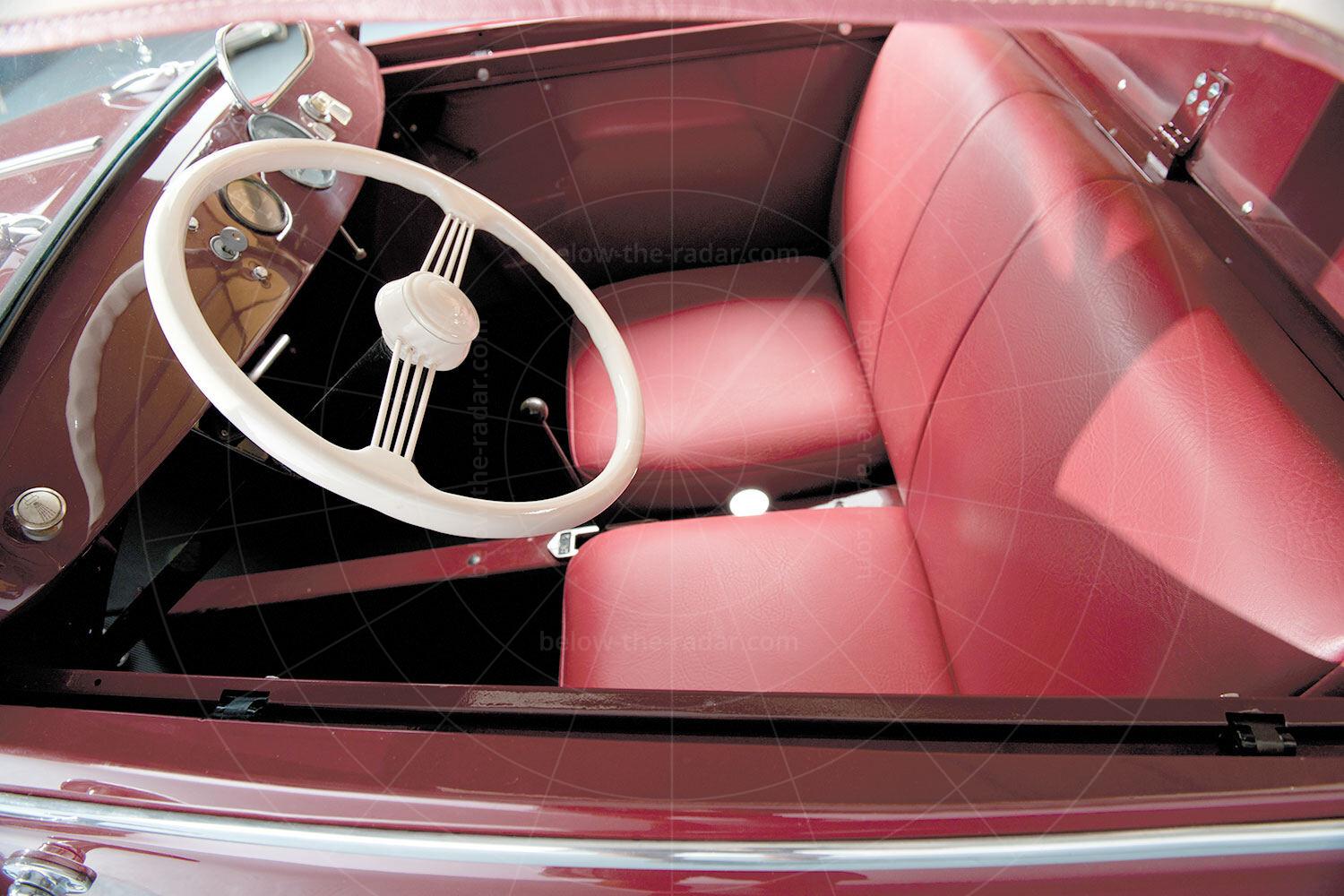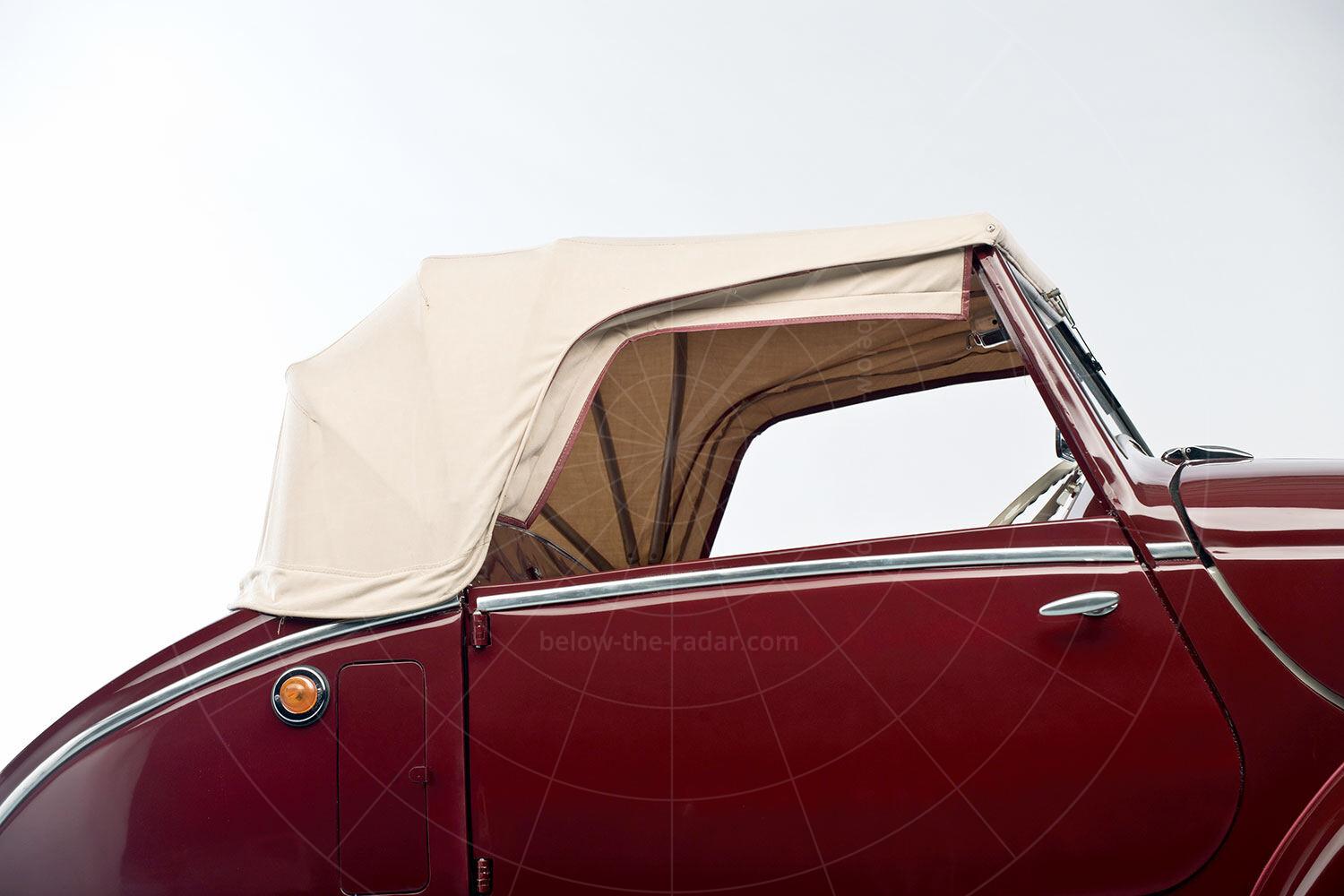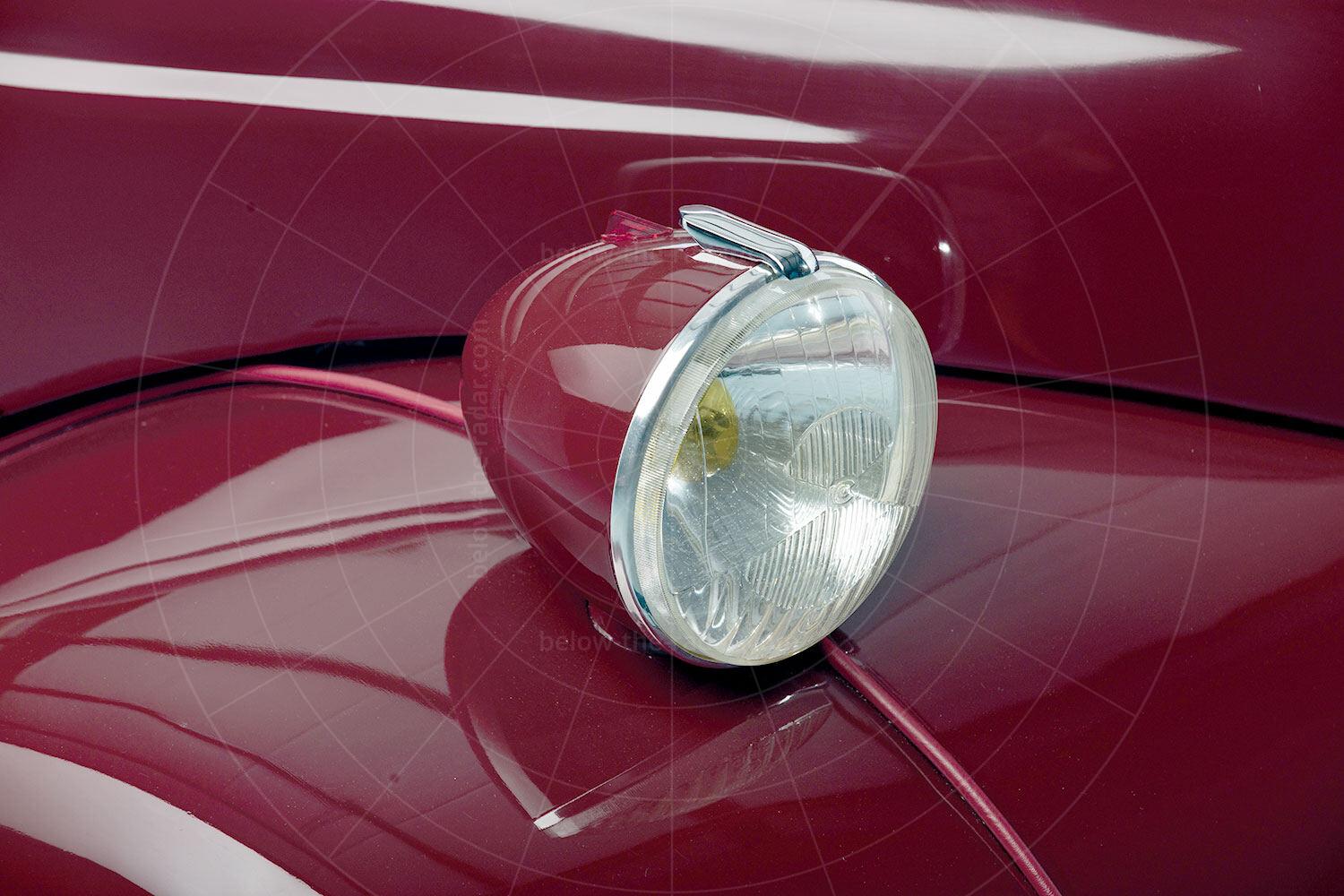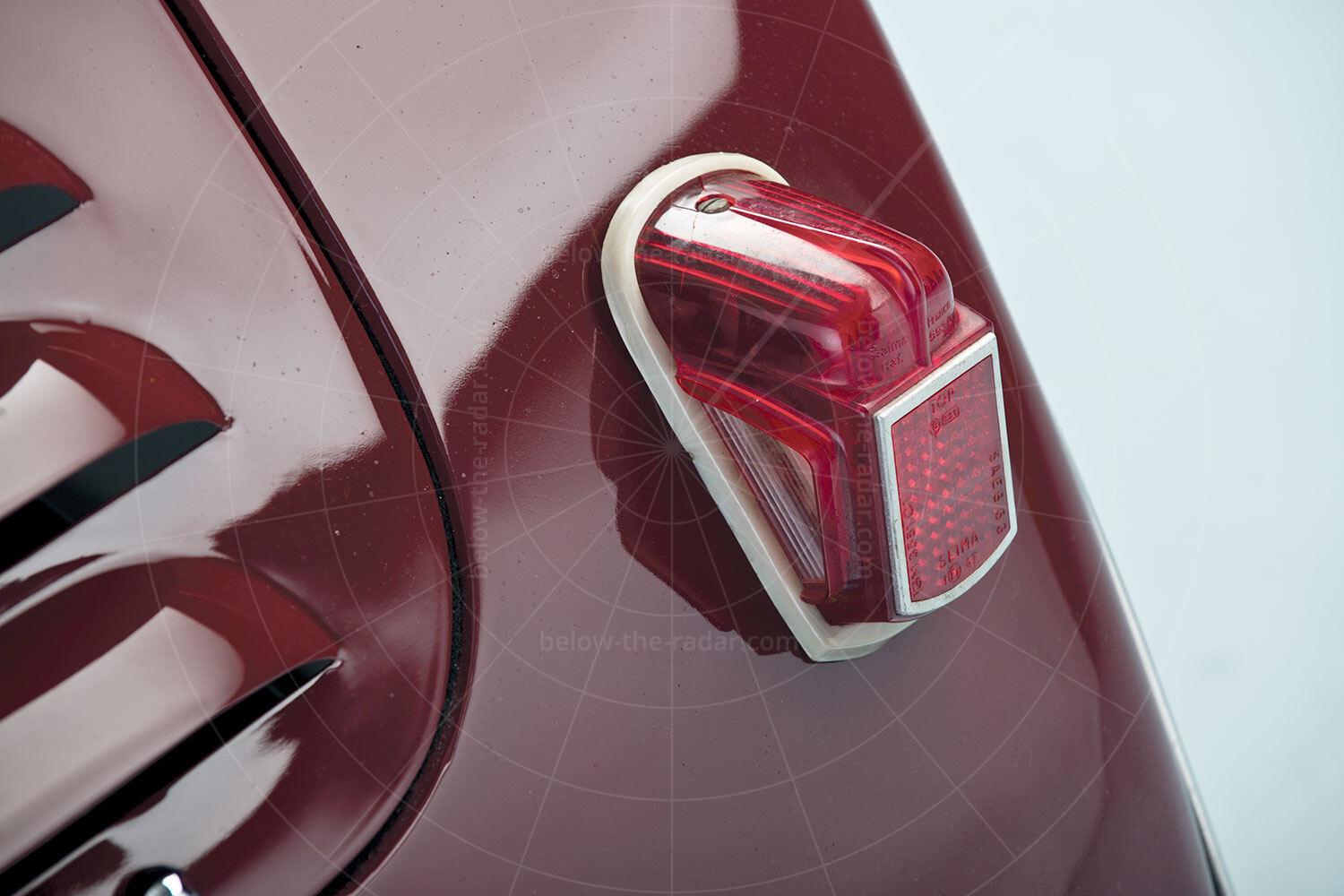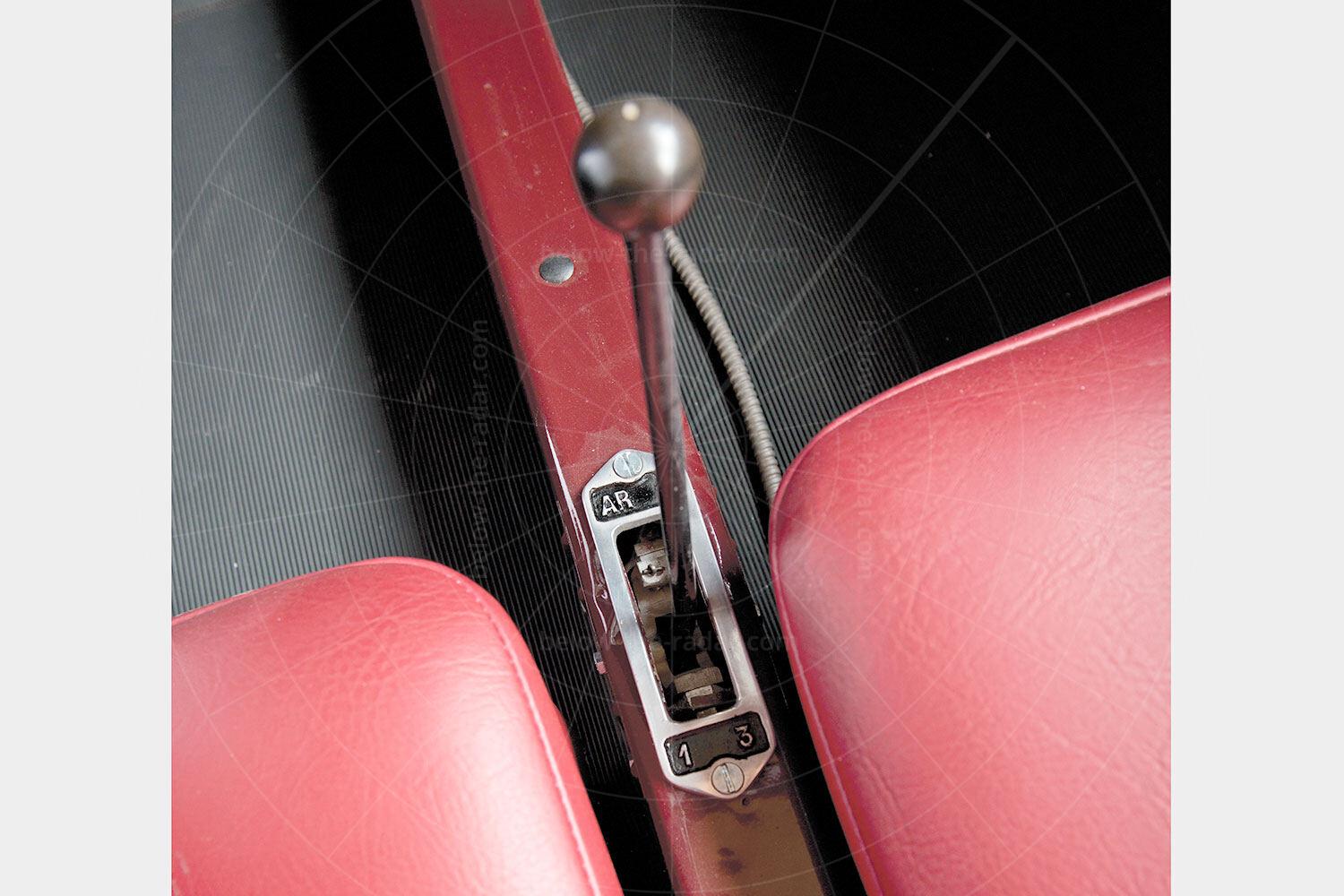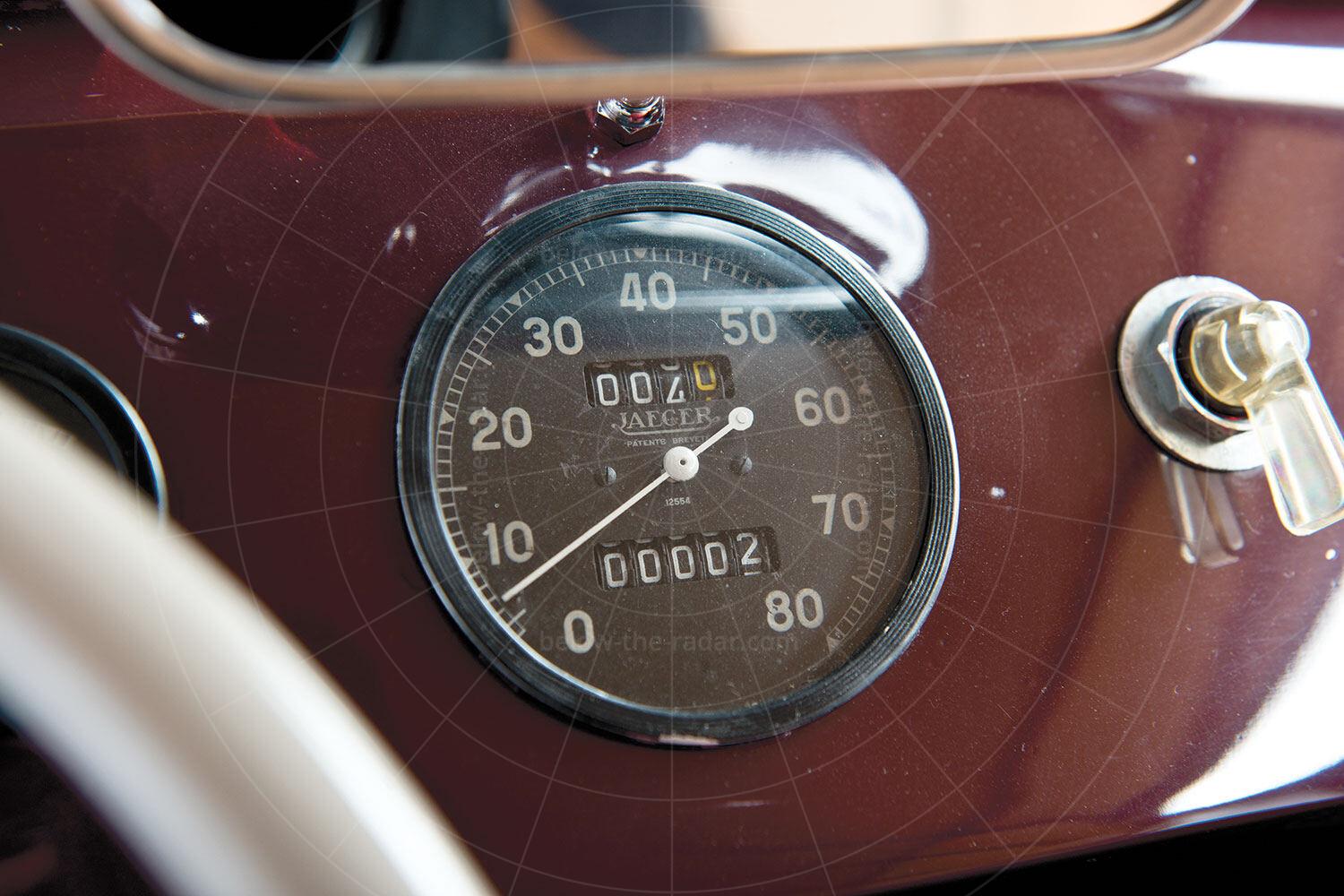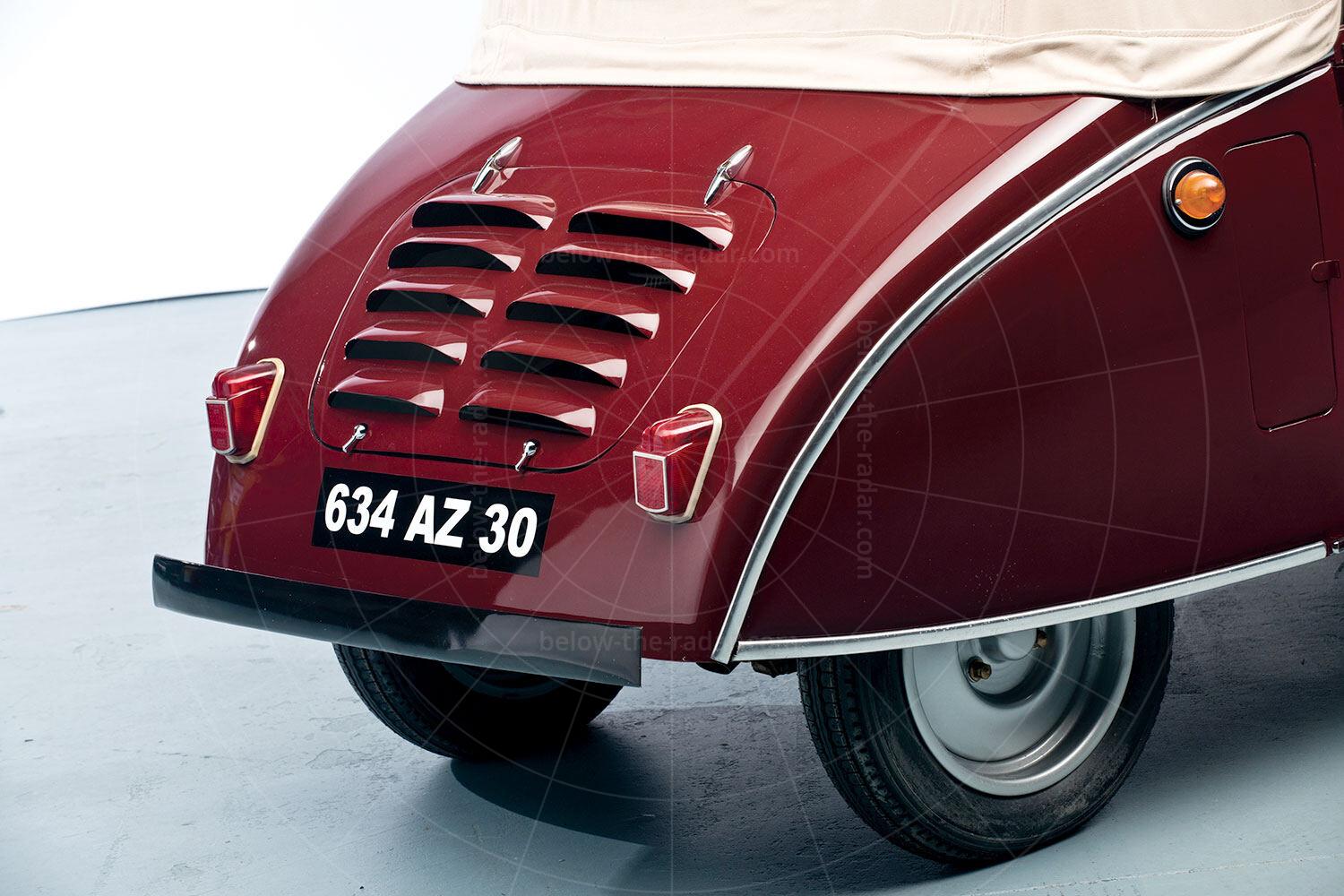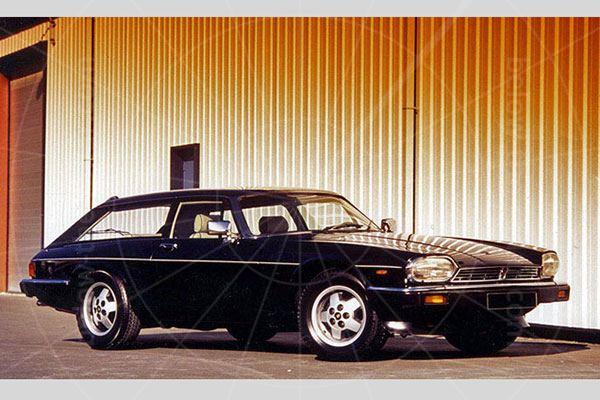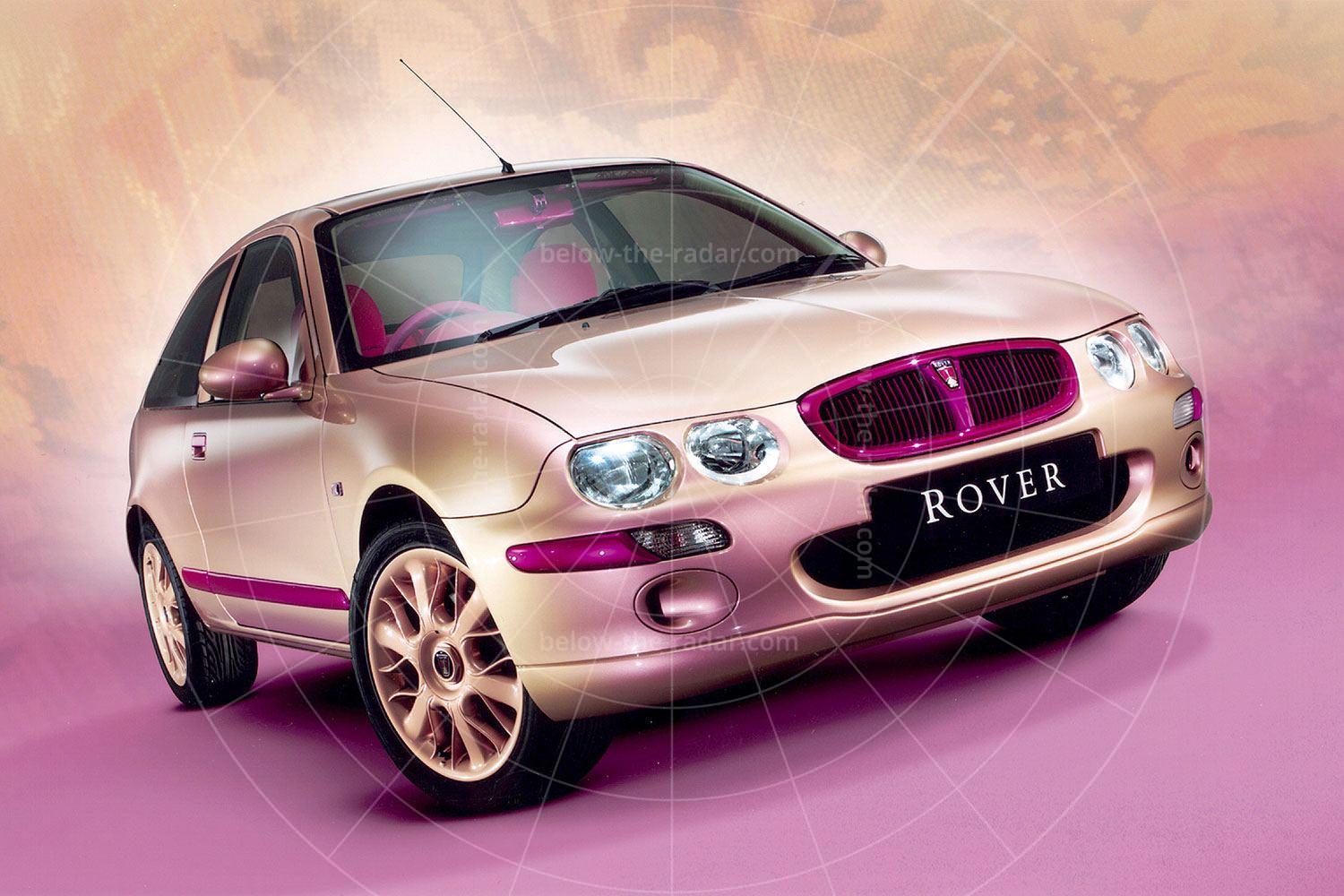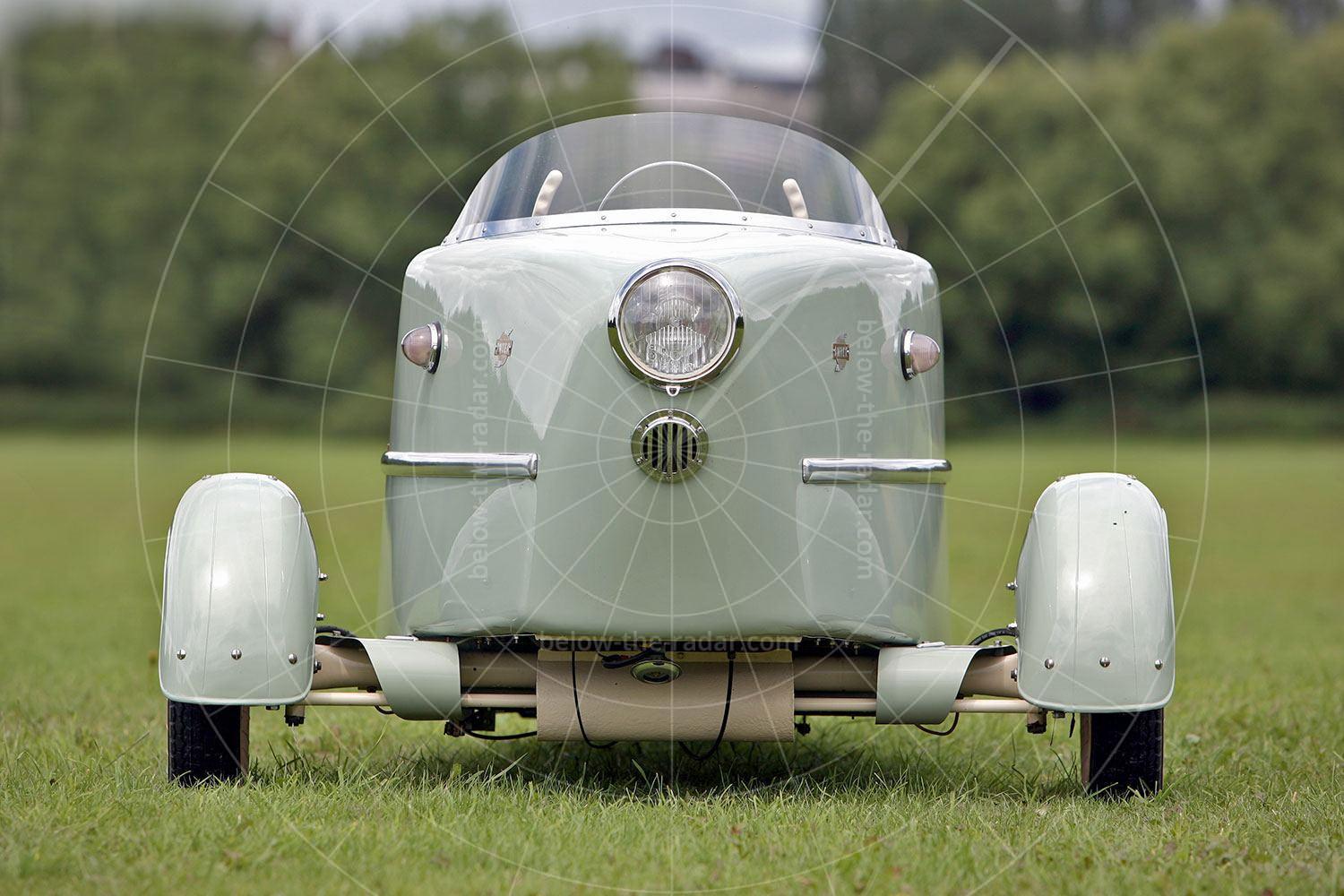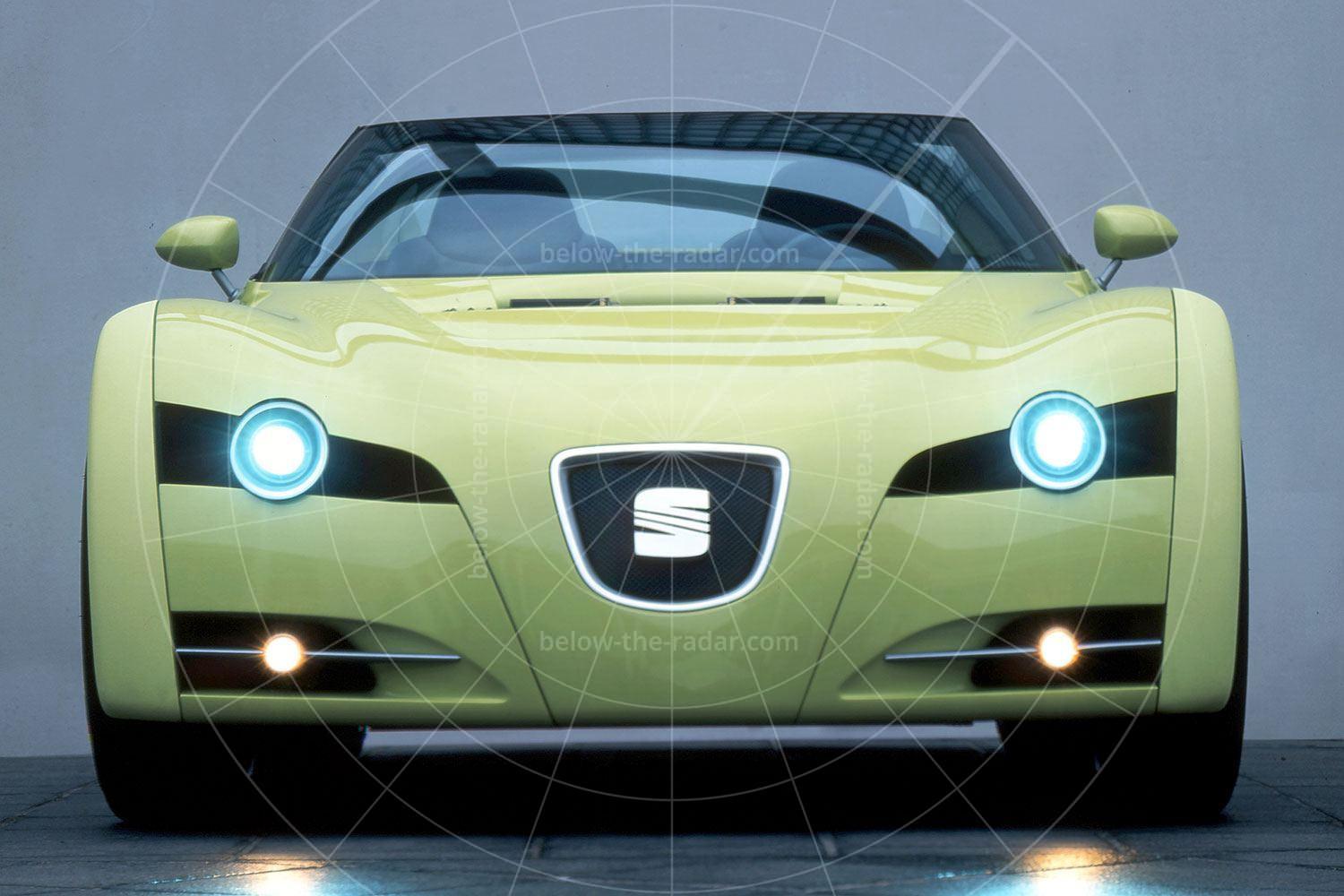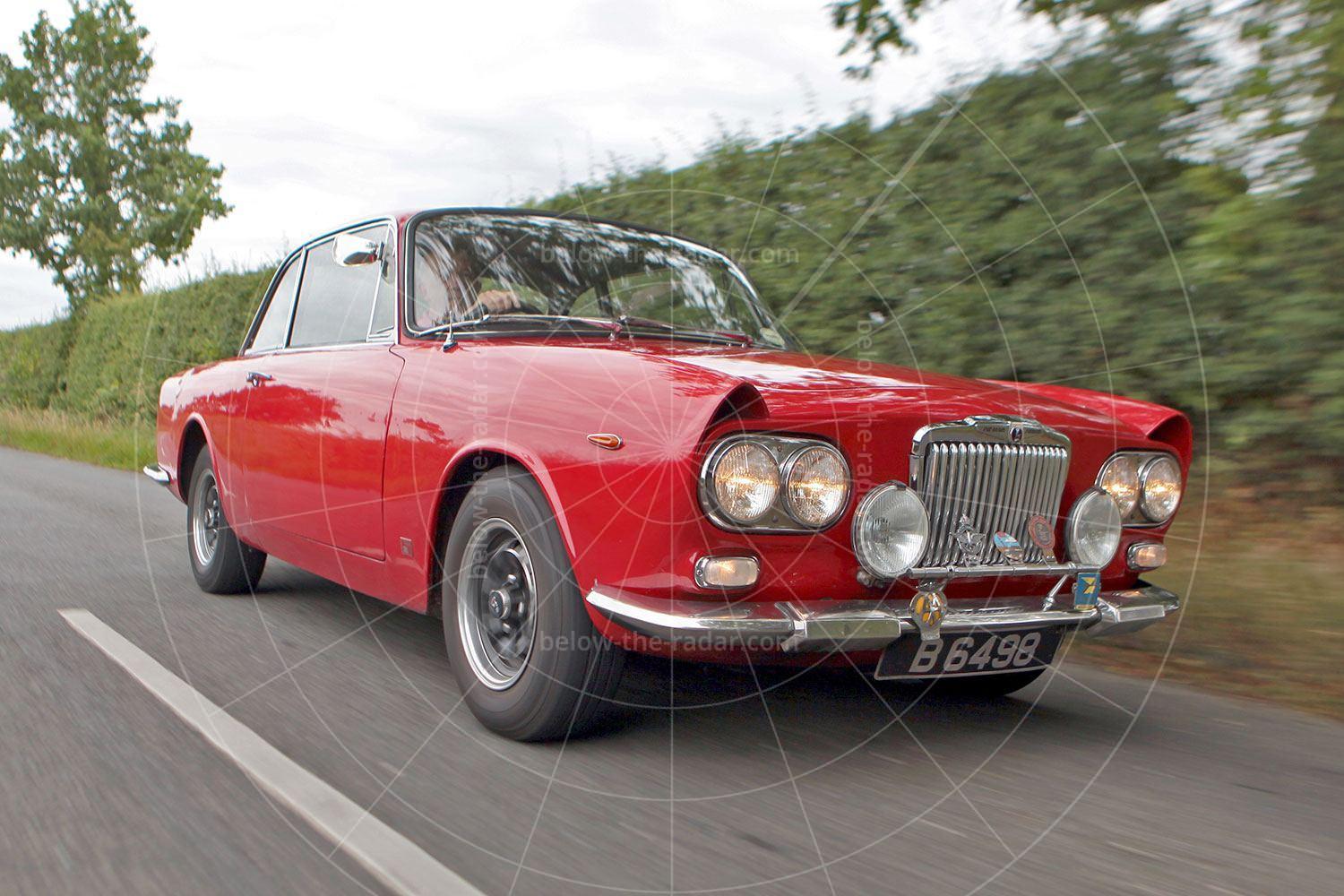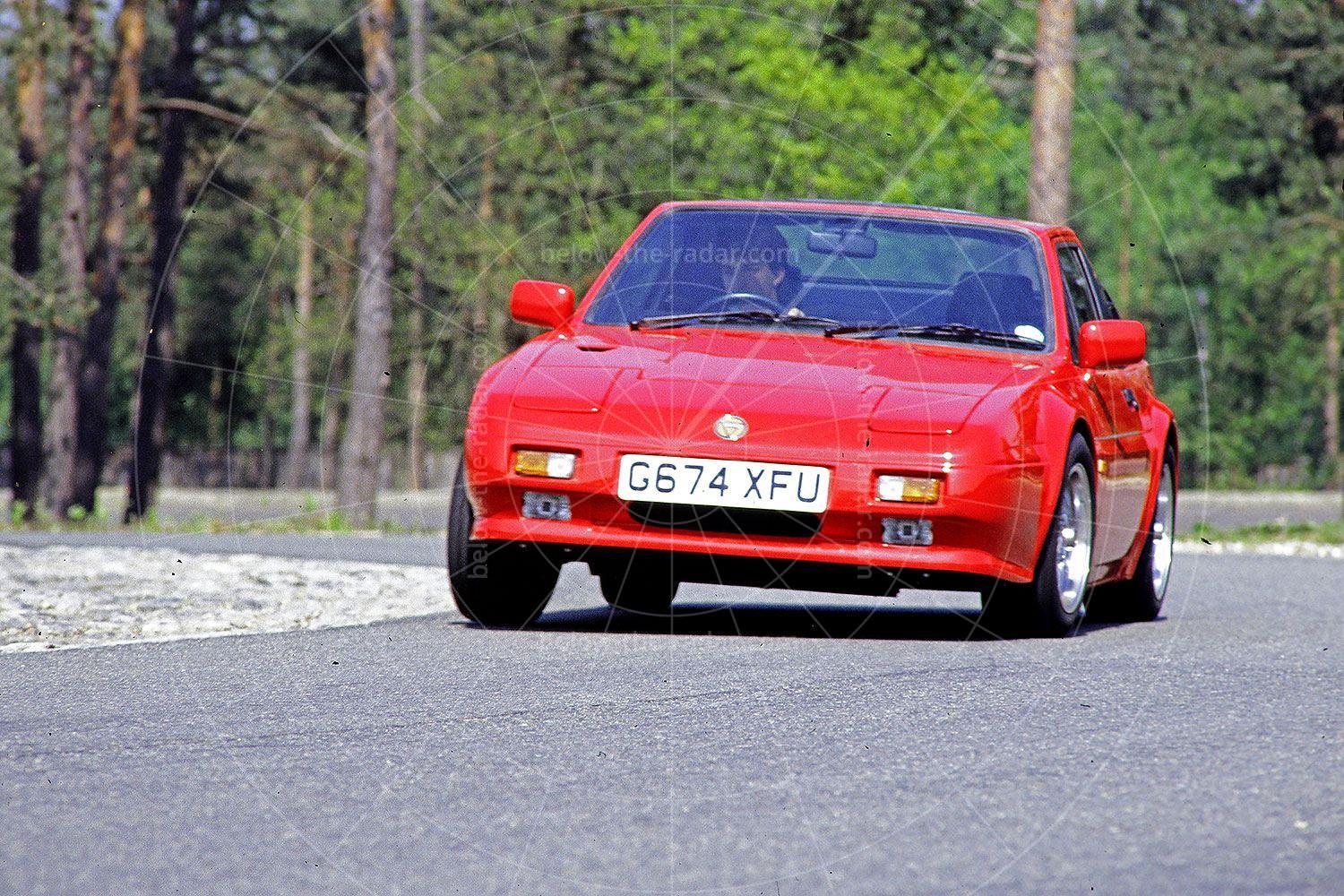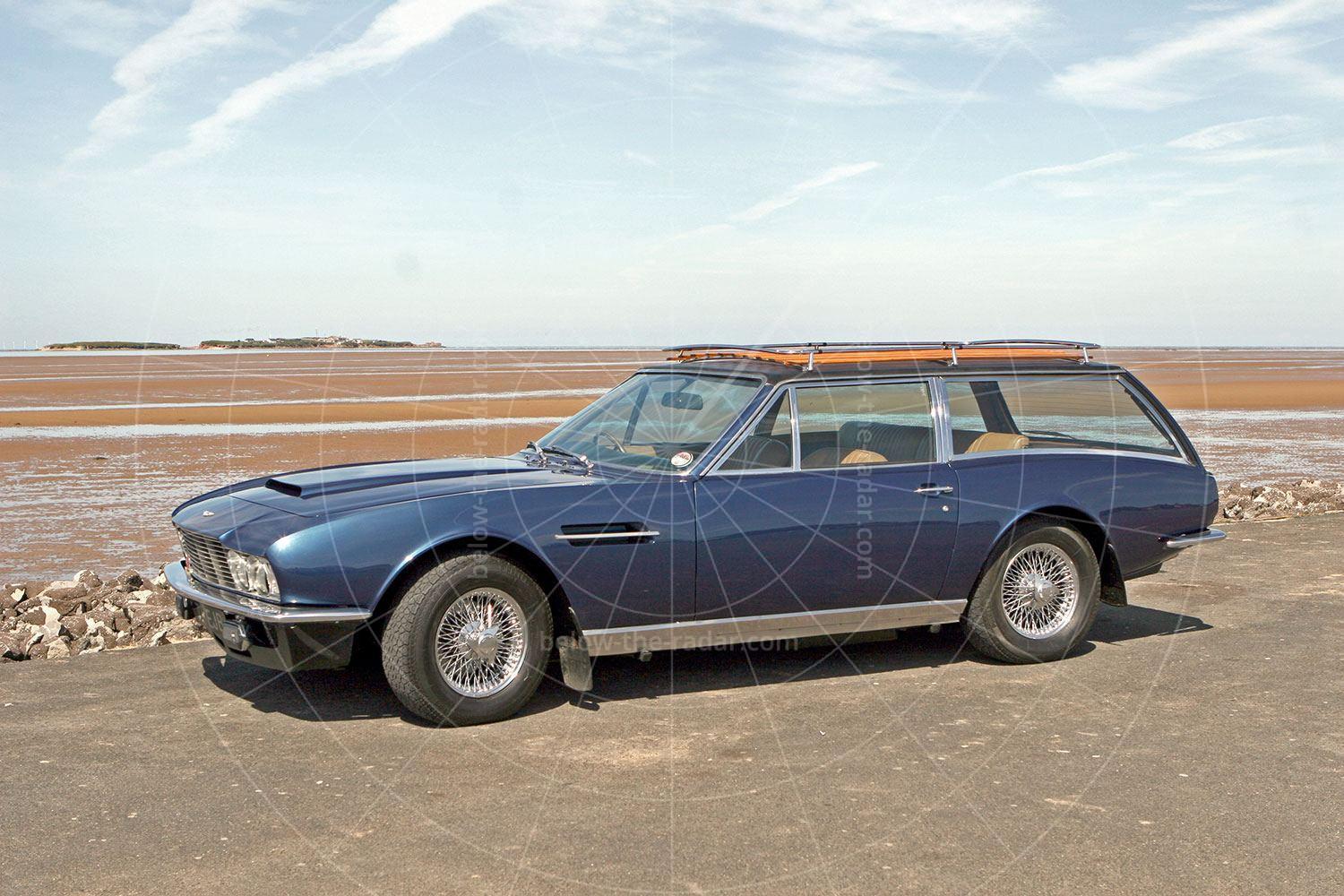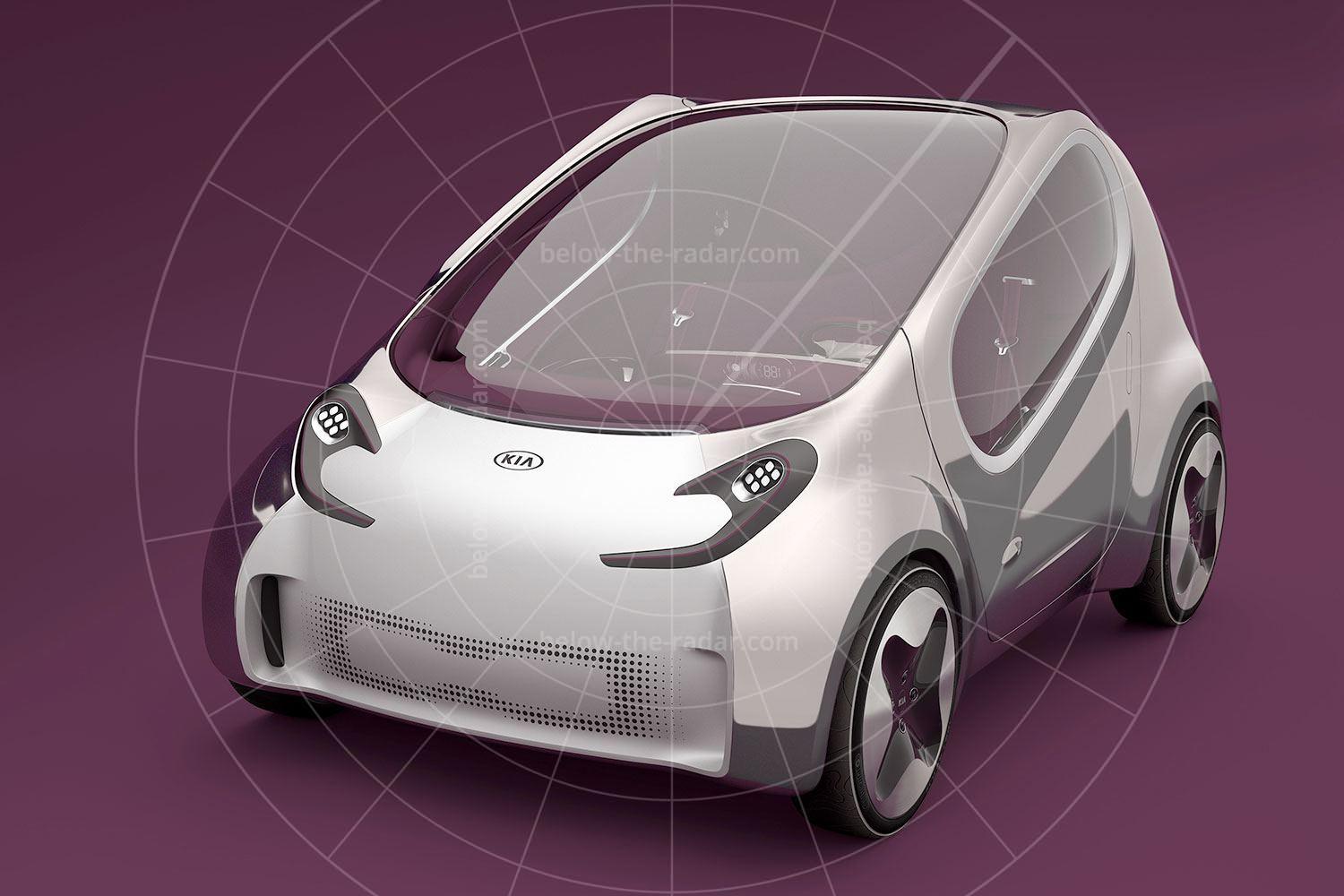Maurice A Julien was a very well qualified engineer, known particularly for his work on the development of the Citroën Traction Avant which made its debut in 1934. He retired to Toulouse at the beginning of WW2, but during the Occupation, materials, especially petrol, were very severely restricted, and Julien designed and built pedal cars.
Julien’s Neocar was stylish and sleek, with its long bonnet, sweeping wing lines, and double kidney grille. It was mechanically more sophisticated than the average pedal car, as the front wheels were driven by cardan shafts, it employed a limited-slip differential, and it used a derailleur, which permitted one or two people to pedal at different rates. Due consideration was given to the control of vibration. The last months of the Occupation saw second-generation motorised versions of Julien's pedals cars being built. Finally, in 1944, the engineer had come up with a much more sophisticated car, a coupé, which was close to the one that would debut at the 1946 Paris Salon.
The two Julien cars that appeared at the 1946 Salon were set apart from the many other small vehicles available at the time. The Type VUP, which was recognisable by its open rear wheels and full-width axle, was powered by a flat-twin engine. The similar MM5 (shown here) had narrow, enclosed rear wheels and was powered by a single-cylinder motor. Both cars were fitted with sliding windows, but the VUP would not see production. The following year was taken up dealing with government bureaucracy to receive permission to develop the MM5 as a production car. Detail improvements were attended to, resulting in better ventilation and braking and a slightly enlarged engine; the result of lots of road testing.
The MM5 that made its appearance at the 1947 Paris Salon was a beautifully proportioned cabriolet with sensuous curved body lines and attractively rounded wings, which flowed together at the front, underneath an exquisitely-shaped pointed hood. One could immediately see the heritage of the Traction Avant in the strong central-welded bulkhead structure-cum-windscreen frame curving up from the sills. The bonnet was hinged from this structure below the windscreen, and the engine cover hinged upwards from behind the seat, allowing unhindered access to the motor and drivetrain. The sliding windows had now been replaced by windows hinged at the door-top to fold down into the interior of the car and into the doors themselves.
Finally, the Julien MM5 shown at the 1948 Salon was available to buy and at 200,000 francs it was the same price as that of archrival Rovin’s new D3. Julien also had on display a tiny van-like estate car capable of carrying a 550lb load. Its harsh, straight lines and rudimentary wood-and-masonite bodywork contrasted sharply with the sweeping curves of the MM5. Its crude, flat, wooden seats were less than inviting, even for a commercial, and the van remained a prototype.
Julien reorganised his company as la Société des Automobiles MA Julien, and now based in Paris, he re-entered the microcar market with a more modern design. The Julien MM7 shown at the 1949 Paris Show appeared to be a copy of Rovin’s D3. There were the same pontoon-shaped, interchangeable front and rear wings but it differed from the Rovin in the semi-circular side windows, like those of the Champion 400 Coupe, and in the headlamps built into the front wings, which the D4 would get in 1954. Despite this revamping, nothing much would come of Julien’s brave final attempt and his company would disappear soon after.
The car shown was sold by RM Sotheby's in 2013 for $54,625, as part of the Bruce Weiner microcar sale.
| Vital statistics | |
|---|---|
| Produced | 1947-1948, France |
| Engine | Rear-mounted, 325cc, 1-cylinder |
| Transmission | Chain drive, rear-wheel drive |
| Power | 10bhp |
Many thanks to RM Sotheby's for the use of its pictures to illustrate this article.


